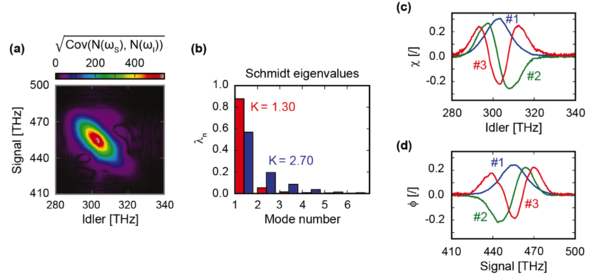Nonclassical states of light are important tools for quantum technologies and the main instrument for quantum communications. In this project we aim to generate three-photon states (triplets) using the Kerr effect. Generation of triplet states by spontaneous decay has not yet been demonstrated and will open up striking possibilities, for example, heralding the arrival of pair-photons. Generation of triplets can be viewed as the reverse of third harmonic generation, requiring a similar phase-matching condition. However, it is linearly dependent on the input power so that increasing the length of the nonlinear medium is important. This makes optical fibre very attractive, although chromatic dispersion prevents phase-matching between pump and signal within the LP01 mode. As a result it is necessary for the third harmonic pump to be in a higher-order mode, which is impractical and yields a poor overlap. We have designed a fibre in which the short wavelength is guided by an all-solid bandgap structure, while the long wavelength is guided by total internal reflection. It consisted of a periodic arrangement of high-refractive index Schott lead-silicate SF6 glass rods (index 1.76 in the IR) embedded in a host with lower refractive index (Schott LLF1, index 1.54), the central core being made from LLF1 glass. The structure supported phase-matched third harmonic generation between the fundamental mode at 1512 nm and a single-lobed mode of the bandgap structure at 504 nm [Cavanna (2016)] with a conversion efficiency of ~0.02% for 12.5 µW average pump power (pulse duration 20 ps and repetition rate 1 kHz).








